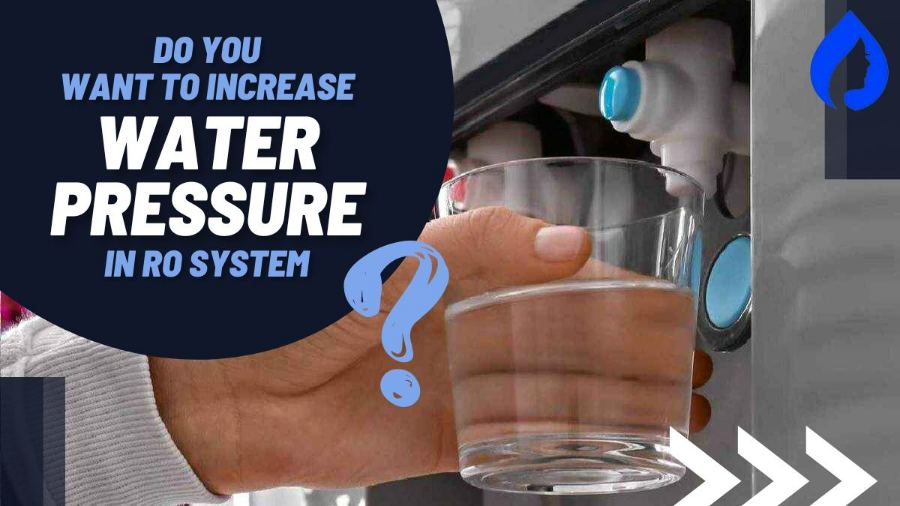
Are you facing low water flow from your RO and wondering why it’s happening?
Low water flow from RO happens when the water pressure falls below 60 psi, the ideal level for water pressure inside an RO system, or when the water’s temperature comes below 77°F. Below these levels of water pressure and temperature, the RO-produced water quality also degrades.
So, how to increase water pressure in RO system?
To troubleshoot this, you need to increase the pressure by installing either an electric pressure-boosting pump or shifting the tank closer to the faucet.
Also, there are other ways to heighten the RO water pressure. Keep reading for a detailed guide on increasing pressure in RO using seven different actionable methods.
How Do I Increase Water Pressure in My Reverse Osmosis? [Cheat Sheet]
| Method | Effectiveness | Ease of Implementation | Time Needed (approx.) | Cost Estimates |
| Installing an electric booster pump | Highly effective | Very easy | Maximum 6 hours + 1 hour needed for cool down | $20 or more |
| Moving the RO filter tank closer to the faucet | Very effective | Moderately easy | A few hours | Professional charge needed (depends) |
| Check the proper hose connection | Effective | Moderately easy | 1/2 an hour to 1 hour | Professional charge needed (depends) |
| Change RO filters | Very effective | Easy (though needs professional help) | Half an hour (approx.) | The price of the new filters (approximately between $24 to $40) and professional charges (depends) |
| Replace the entire storage tank of the RO/install another RO filtration system tank (secondary water tank) | Highly effective | Moderately easy | A few hours, depending on the professional’s skills and work speed | $42 (approx.) for 4 Gallon water tank |
| Use an air pump | Effective | Moderately easy | A few hours | Professional charges (depends) |
| Contact local water supply authorities | Effective | Easy | Depends | Zero cost |
Installing A Booster Pump
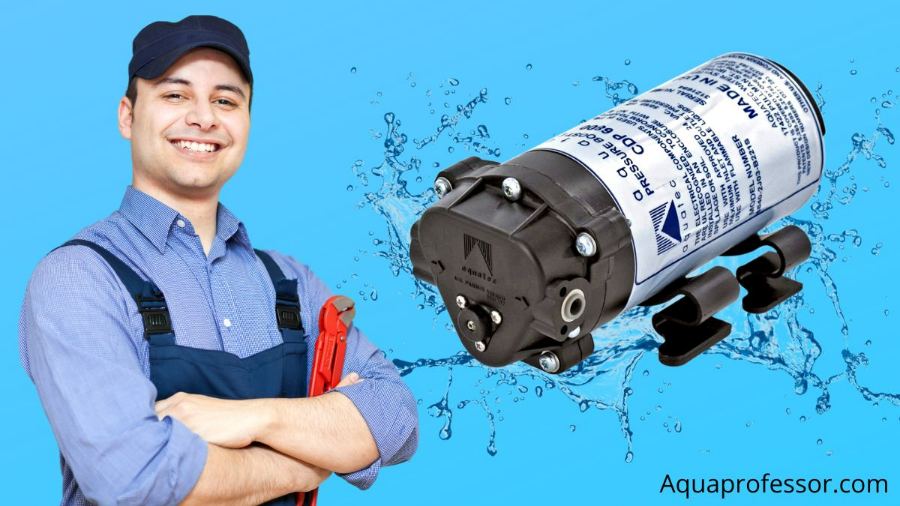
Most of the time, the problem of low water succession rate in the RO system gets solved by installing an electric pressure-boosting pump. It’s the easiest way to increase the water pressure in an RO.
Using a booster pump helps in treating the water production rate. Besides, it also assists in boosting the pressure tank’s storage volume and improves the flow rate of water flow through the faucet.
Keeping on increasing the feed pressure with the help of a booster pump might result in a pressure increase of up to 100 psi. It’s not something good, though it’s not harmful either.
When Is It Effective?
A water pressure booster pump is effective when your RO water pressure falls below 60 psi. In that case, it will boost your RO performance. Always choose a booster pump with high Gallons per day or GPD rating for your house’s RO system.
Steps To Follow With Precautions:
So, check out! If your RO filter design allows, direct the pump between your RO sediment filter and the carbon filter of the system.
Time And Cost Estimates, & Effectiveness:
This method is highly effective and takes a maximum of 6 hours. One hour extra is needed for its cooldown. The booster pump costs approximately $20 or more.
You have to control the water pressure using the booster pump so that it remains below 100 psi, ideally between 60 psi – 75 psi. In case you are not capable of maintaining the pressure, call a professional. In that case, you will be required to pay a fee to the professional.
Also Read: Best Whole-House RO
Moving The RO Tank Closer To The Faucet
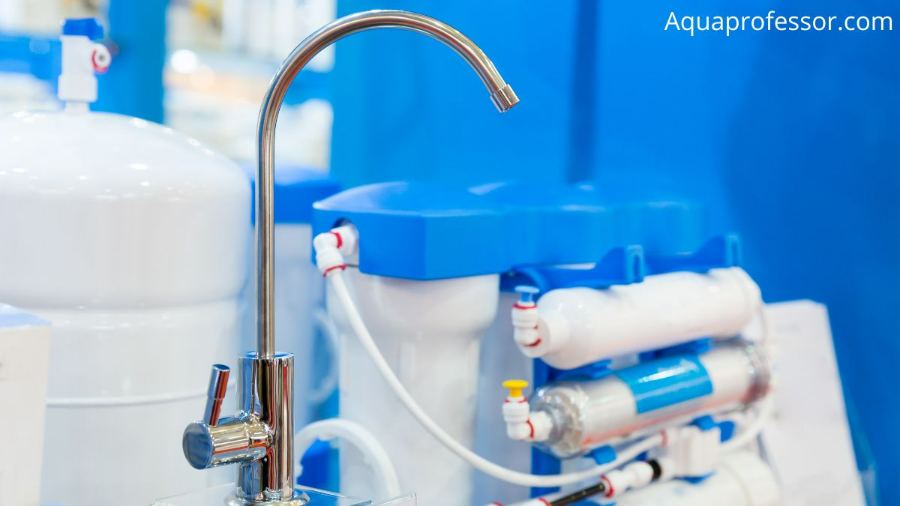
Moving the RO filter tank closer to the faucet improves the water flow. Otherwise, the water gets pushed through many tubing with greater opposition, and thus the water flow slows down when the water ultimately reaches the faucet.
Note:
Also, in such a case, the water requires pushing up. It also leads to less flow of water from the faucet. On the contrary, if you shift the RO system tank beside your faucet or under your sink, the water doesn’t have to travel a long way all through the impediments, allowing good water flow pressure from your tap.
When Is It Effective?
This process is effective when your RO system’s tank is situated far away from your faucet, and you get a slow water flow.
Steps To Follow With Precautions:
Time And Cost Estimates, & Effectiveness:
The process effectively brings back the normal flow in your faucet’s water and only requires a few hours to finish. However, it is usually done with the help of a professional, which means you’ve to bear the extra charges.
Also Read: What Is Good Water Pressure for a Well?
Check Proper Hose Connection
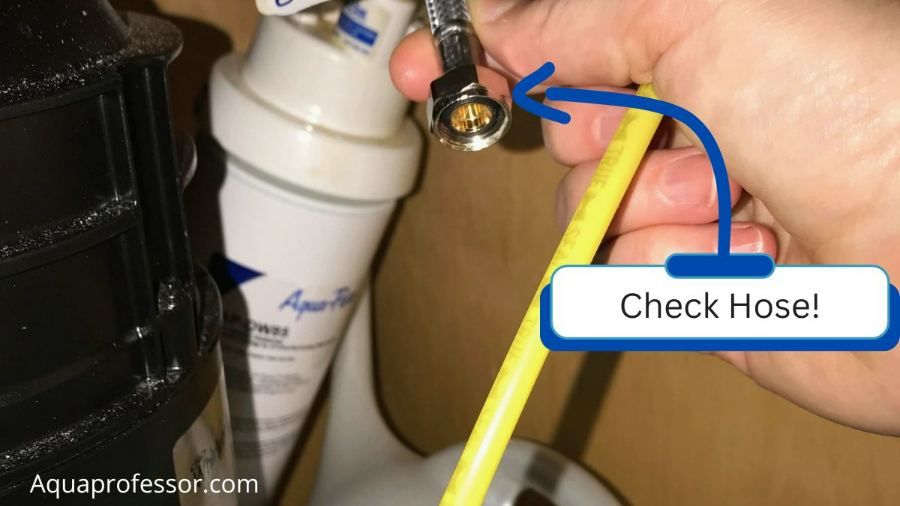
Sometimes the RO water flow from your faucet may get interrupted because of the improper/loose hose connection or knots and kinks in your house’s water line.
Also, the water flow can obstruct the water flow if your supply valves don’t remain open during your RO system installation. So, check the hose connection and water pipe to identify the issue.
When Is It Effective?
It’s effective when the connection of the hose pipes is loose, the valves inside the water line are not closed properly, or there are kinks and knots within the hose or water pipe.
Steps To Follow With Precautions:
Time And Cost Estimates, & Effectiveness:
The method is effective for boosting the flow of water and may take anywhere between half an hour to one hour.
The cost of the process involves the plumber’s charge. You may also have to pay additional expenses if you fix or replace the plumbing system, pipes, or fixtures.
Also Read: 9 Reasons Why Well Pressure Fluctuates
Change RO Filters
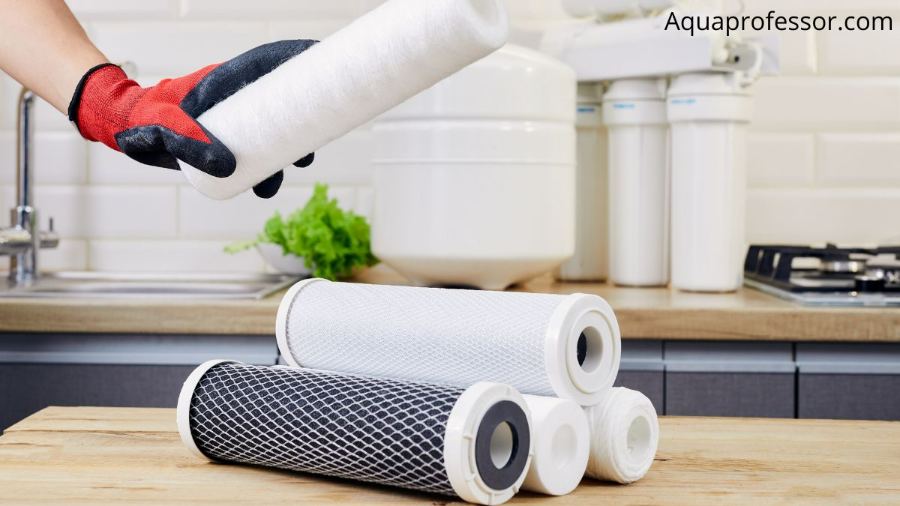
Like any other filters, RO water filters may get clogged if not replaced promptly, resulting in a slow RO water supply from the tap. Clogged or dirty filters/membranes of the RO delay the time it takes to fill the tank (4 to 6 hours instead of the normal time of 2 to 4 hours).
So, timely replacement of these filters is necessary. Also, you must regularly check out the storage tank of your RO and its drain tube, drain layer and feed water valve and call the plumber for the fixation if any issue is found.
Important:
You may also regularly track the water pressure of your RO system’s tank with the help of the valve below your system’s blue cap or by using a PSI gauge.
When Is It Effective?
It’s effective when your RO water filters get clogged with dirt and contaminants and your faucet water supply is low.
Steps To Follow With Precautions:
Time And Cost Estimates, & Effectiveness:
The method is very beneficial and can be completed in half an hour.
The cost of the new filters ranges approximately between $24 to $40. You will have to spend on the professional plumber’s charges if you hire them for your filter replacement.
Replace The Entire Storage Tank Of The RO/ Install A Secondary Water Tank
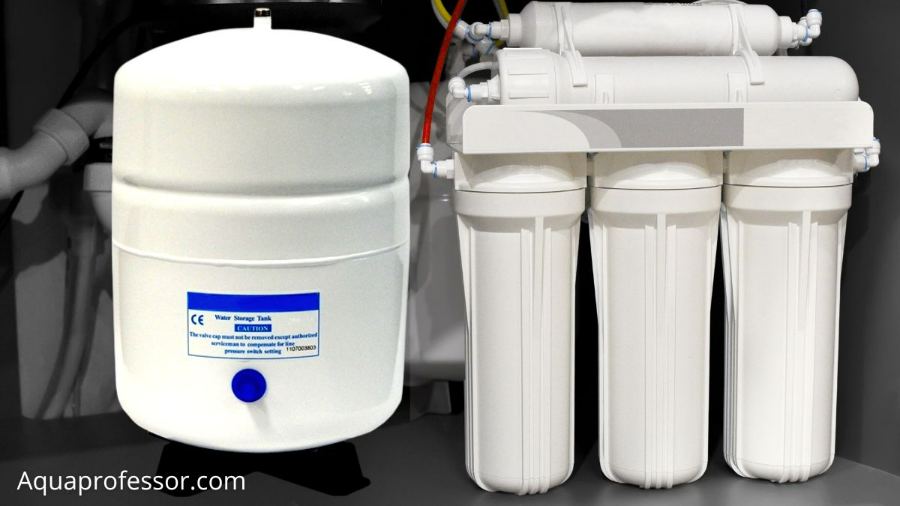
Occasionally, your RO filter’s tank bladder gets ruptured for not maintaining it regularly. So if you notice a drop in the water flow rate after delivering 1 cup/ 8 oz of water, your RO filter’s tank is ruptured, and needs a replacement.
Sometimes, installing another water tank beside the first helps boost your RO water flow, even if your primary tank is not ruptured. The second RO filtration system’s tank allows more water storage, double the water in the first tank. More water means an increase in the water flow rate.
When Is It Effective?
Installing a replacement tank or secondary tank in your RO system is effective when the RO filtration system’s tank gets ruptured, or the water flow is slow.
Steps To Follow With Precautions:
Time And Cost Estimates, & Effectiveness:
Installing a replacement or new secondary tank in an RO system is effective and takes only a few hours, depending on the professional’s skills and speed. It costs approximately $42 for 4 Gallons of water tank.
Also Read: Bladder vs Pressure Tank For Well
Use An Air Pump
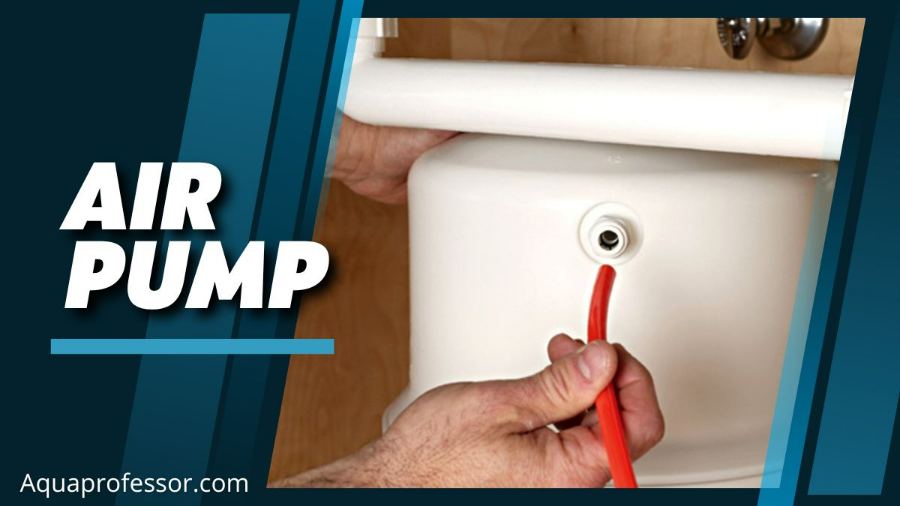
Another reason for the slow-flowing speed of water may be the low air pressure within the tank. Normally any RO (filled or empty) requires a tank air pressure of 7-8 psi (as read by any air pressure gauge).
However, if the pressure declines from that level, the speed of water flow from your faucet decreases. An air pump can restore the declined air pressure within the tank and thus speed up the water flow from your faucet.
When Is It Effective?
It’s effective when your RO’s tank air pressure decreases for some reason. An air pump can solve the problem in such a situation.
Steps To Follow With Precautions:
Time And Cost Estimates, & Effectiveness:
The procedure is useful and takes a few hours to get completed. You may do it yourself if you have basic plumbing skills. Otherwise, it’s better to call a professional.
Note:
There’s no money expenditure in this process except paying the charge that the professional demands. If you do it yourself, it will be done at zero cost, though there’s a certain cost for purchasing the air pump.
Contact The Local Authorities
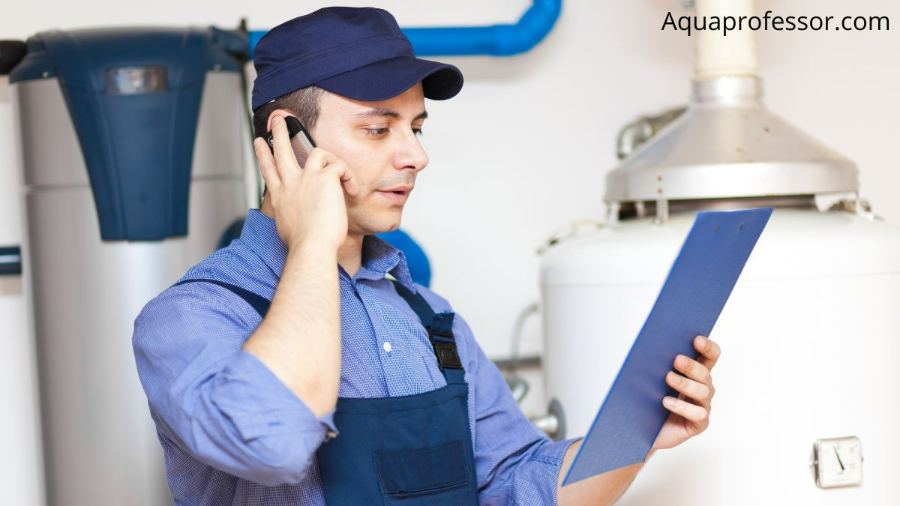
If none of the methods helps you, resort to help from the local water utility company. Contacting the local authorities will help you understand the reason behind the low water flow rate. Whether it is due to ongoing maintenance work done by the local water utility providers or for any other reason.
When Is It Effective?
It becomes effective when all other troubleshooting methods fail. When any maintenance work is ongoing under the local water bodies, contacting them is necessary as it may be the reason for the low water flow from the faucet.
Steps To Follow With Precautions:
Time And Cost Estimates, & Effectiveness:
The technique is productive. The time it takes to boost the water succession depends on the local authorities’ actions. The process involves zero cost.
Reverse Osmosis Water Flow Rate Calculation [Simple Math!]
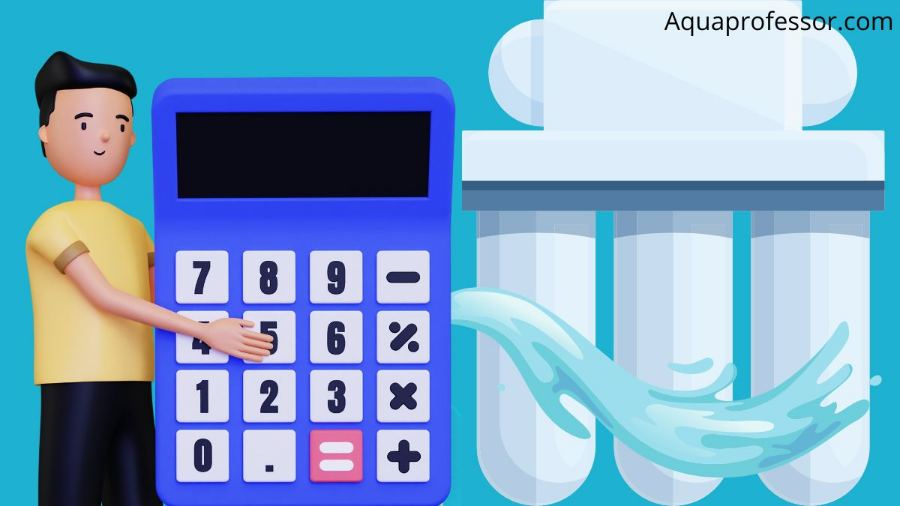
A residential Reverse Osmosis filter’s flow rate is much lower than the tap water flow rate and is measured in GPD or gallons per day.
Several factors contribute to your RO unit’s flow rate, like:
For example, if your unit is small, its water flow rate will be low, and vice versa.
The flow rates of popular RO systems in the market are marked from 50 gpd to 1000 gpd.
Now, the question is:
How can you verify the water flow rate mentioned for your RO system?
Here’s the step-by-step process for it-
Note: 500 gpd = 20.83 gph (gallons per hour) = 0.347 gpm (gallons per minute).
For example, assume that your RO system produces 4 ounces of water each minute.
So, 4 x 1440 (mins/day) = 5760 ounces.
=> 5760 ounces / 128 (ounces/gallon) = 45 gallons/day.
=> 45 / 24 hours/day = 1.875 gph.
5 Pro Tips To Better Maintain Your RO System

Here are ways through which you can better maintain an RO system –
How To Increase Water Pressure In RO System FAQs
How much pressure should my Reverse Osmosis tank have?
The normal water pressure for any RO filter tank is 60 psi. Also, the RO system’s tank must comprise 7 – 8 psi of air pressure. It’s the normal tank air pressure for any Reverse Osmosis system.
What happens if the RO tank pressure is too high?
If the pressure of an RO filter tank gets too high, the filtered water doesn’t enter your RO system’s holding tank. So, an RO system’s ideal tank pressure of 8 psi gets disturbed. With time, a RO pressure tank may wear out. So, if it happens, try re-pressurizing your Reverse Osmosis system tank using a bicycle pump by draining all the water from the tank.
How do I know if my RO pressure tank is bad?
If you notice any of the following problems, it means that your pressure tank is not functioning properly:
a. Zero/extremely low water flow
b. Continual draining of water without any shut-off
c. Bad taste and odor
d. Gurgling noise from the water flow
e. Leakage in filter housing or air gap faucet
Why does my RO system run out of water?
Your RO system may run out of water because of a clogged or deteriorated RO membrane. As a result, your RO system produces extremely low water flow, which eventually turns to nil.
How long does it take for the RO tank to fill?
A normal RO filtration system tank gets filled within 2 to 4 hours if the tank is of 2.8 gallons / 10.6 L capacity.
Adarsh is a Health & Nutrition Sciences graduate with expertise in environmental health. He is associated with ventures like Glacier Fresh Filter and Simpure Filter Systems. Through Aqua Professor, he intends to provide helpful information to every home to help them make smarter decisions.
